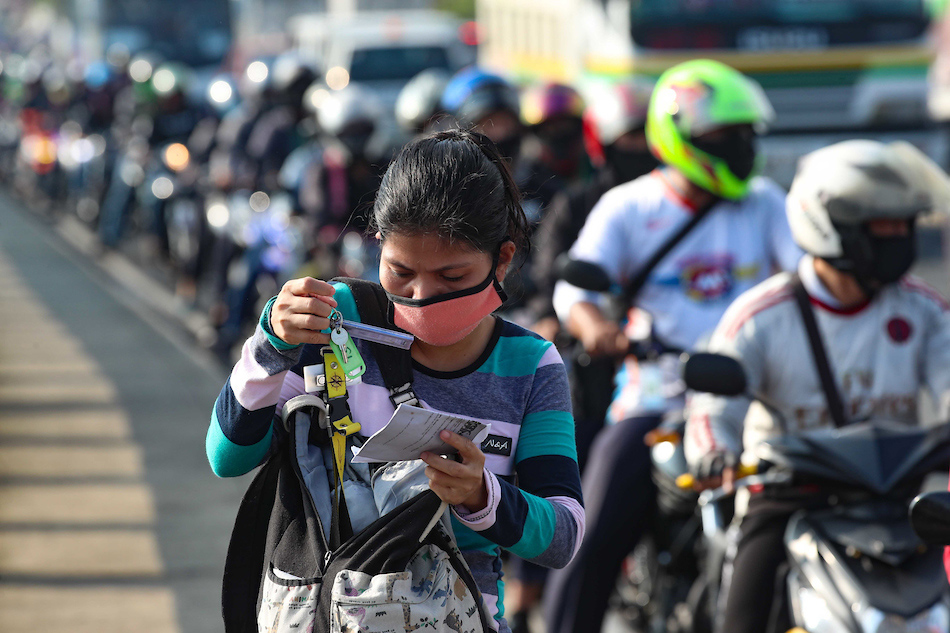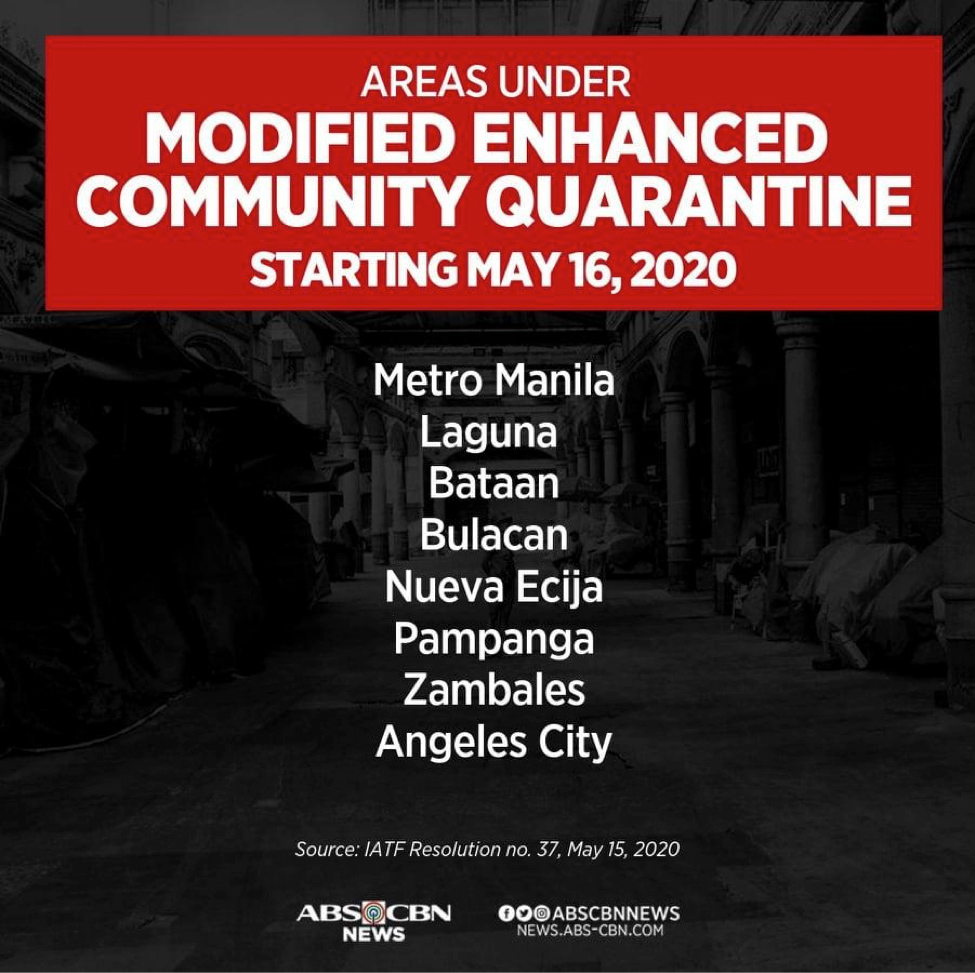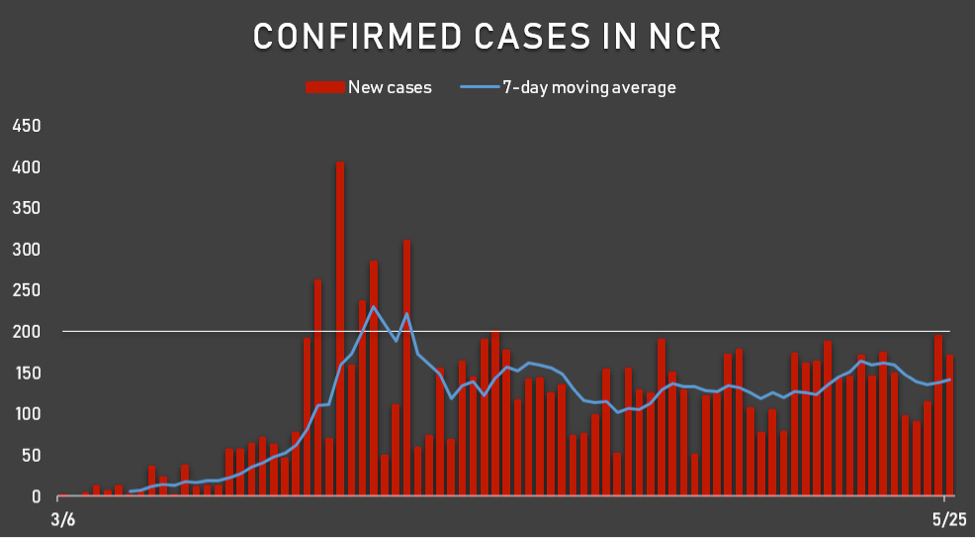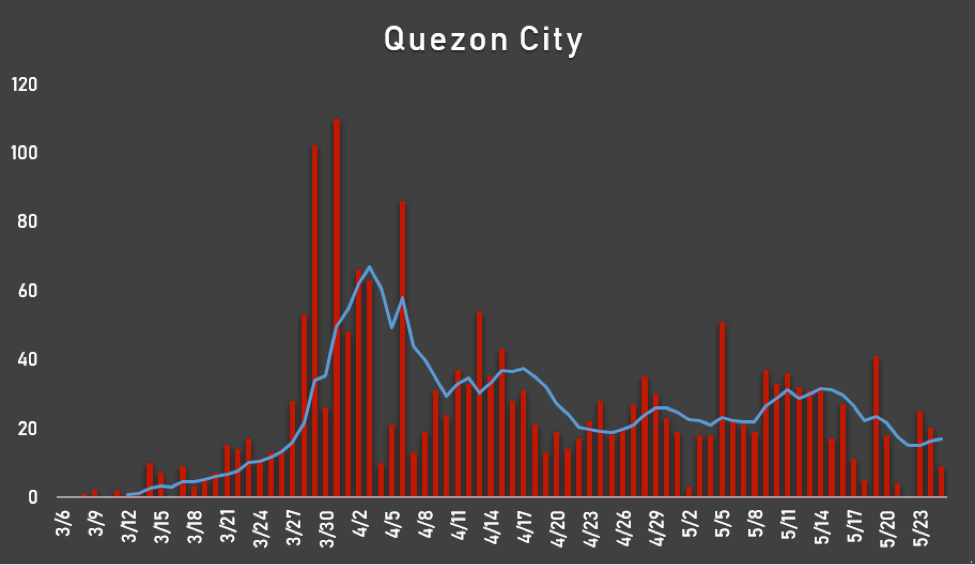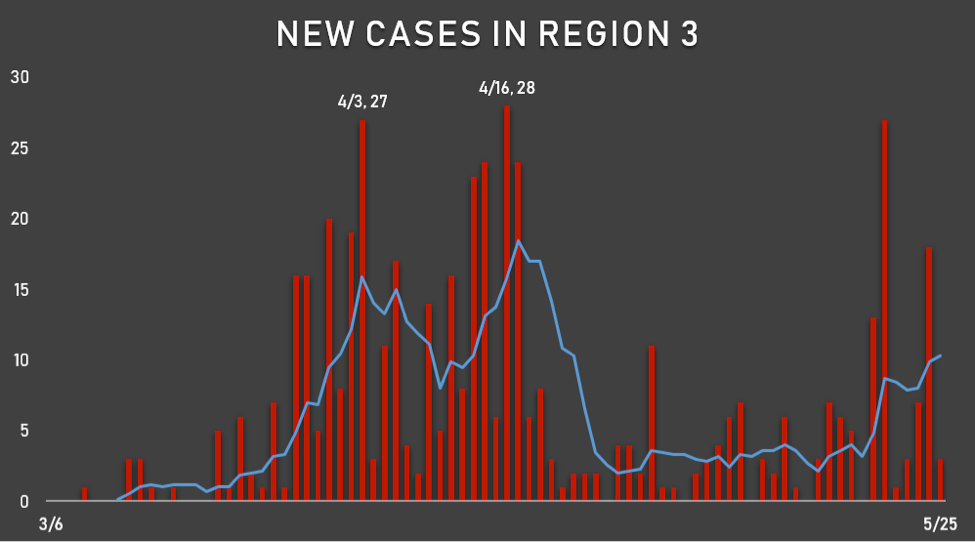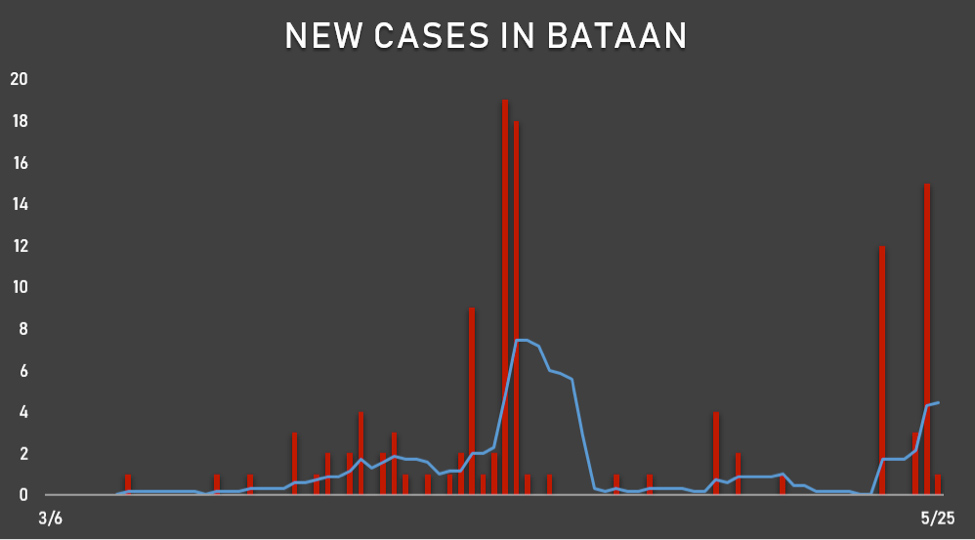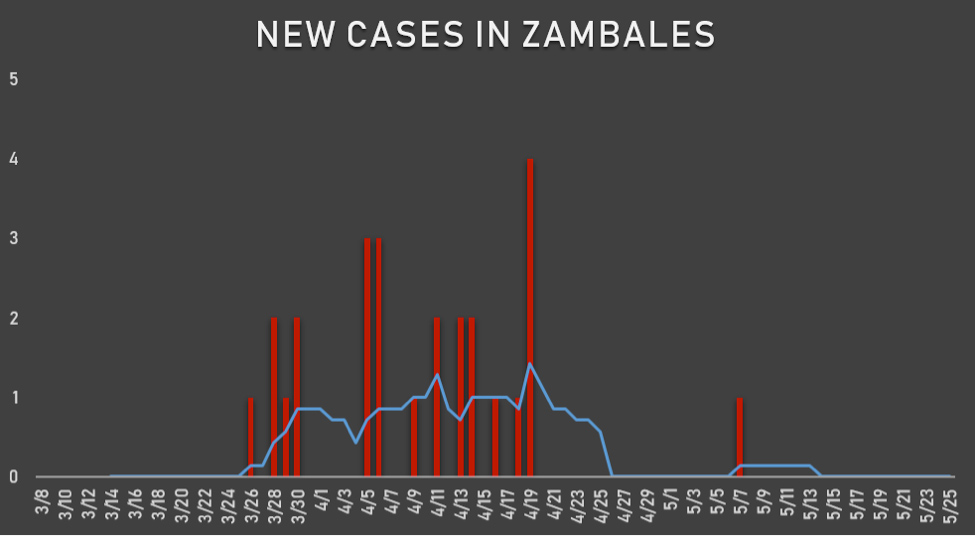Is the National Capital Region ready to lift the lockdown? | ABS-CBN

Welcome, Kapamilya! We use cookies to improve your browsing experience. Continuing to use this site means you agree to our use of cookies. Tell me more!
Is the National Capital Region ready to lift the lockdown?
Is the National Capital Region ready to lift the lockdown?
Warren de Guzman and Edson Guido,
ABS-CBN Data Analytics Team
Published May 27, 2020 04:28 PM PHT
|
Updated May 27, 2020 05:53 PM PHT
MANILA - The Philippines has in place one of the longest community quarantines in the world as part of local efforts to contain the COVID-19 pandemic.
MANILA - The Philippines has in place one of the longest community quarantines in the world as part of local efforts to contain the COVID-19 pandemic.
The Metro Manila Council wants the National Capital Region to transition to general community quarantine (GCQ) from its current modified enhanced community quarantine (MECQ) by June 1.
The Metro Manila Council wants the National Capital Region to transition to general community quarantine (GCQ) from its current modified enhanced community quarantine (MECQ) by June 1.
But is the NCR ready to open up?
But is the NCR ready to open up?
Data from the Philippine Health Department as of May 25, as processed by the ABS-CBN Data Analytics Team, can give us some insight on how to answer this question.
Data from the Philippine Health Department as of May 25, as processed by the ABS-CBN Data Analytics Team, can give us some insight on how to answer this question.
ADVERTISEMENT
The quarantines currently in place are as follows: Cebu City and Mandaue City are under ECQ; The National Capital Region, Laguna, Bataan, Bulacan, Nueva Ecija, Pampanga, Zambales and Angeles City are under a more relaxed MECQ.
The quarantines currently in place are as follows: Cebu City and Mandaue City are under ECQ; The National Capital Region, Laguna, Bataan, Bulacan, Nueva Ecija, Pampanga, Zambales and Angeles City are under a more relaxed MECQ.
The rest of the Philippines is under the much looser GCQ, or are no longer subject to any lockdown measures.
The rest of the Philippines is under the much looser GCQ, or are no longer subject to any lockdown measures.
Apart from the COVID-19 data, these quarantine measures were also instituted based on the capacity of the area’s health facilities to handle COVID-19, including access to Personal Protective Equipment or PPEs, and ventilators.
Apart from the COVID-19 data, these quarantine measures were also instituted based on the capacity of the area’s health facilities to handle COVID-19, including access to Personal Protective Equipment or PPEs, and ventilators.
The ABS-CBN Data Analytics Team created charts showing two key areas to the Philippine economy that are under quarantine. The National Capital Region, and the key food production hub, Central Luzon.
The ABS-CBN Data Analytics Team created charts showing two key areas to the Philippine economy that are under quarantine. The National Capital Region, and the key food production hub, Central Luzon.
This chart shows the number of confirmed COVID-19 cases In the National Capital Region.
This chart shows the number of confirmed COVID-19 cases In the National Capital Region.
The bar graph in red shows the number of cases confirmed each day. The blue line shows the 7-day moving average. The red bar graph is more volatile, the 7-day moving average provides a clearer picture of the overall trend. A flattening of this blue line would indicate COVID-19 cases have significantly decreased, and the pandemic could be ending in that particular area.
The bar graph in red shows the number of cases confirmed each day. The blue line shows the 7-day moving average. The red bar graph is more volatile, the 7-day moving average provides a clearer picture of the overall trend. A flattening of this blue line would indicate COVID-19 cases have significantly decreased, and the pandemic could be ending in that particular area.
Right now, the blue line is not flat.
Right now, the blue line is not flat.
However the different Highly Urbanized Cities that make up the NCR also have different circumstances, like Quezon City. This chart shows there is no clear decline in COVID-19 cases in the largest city in the National Capital Region. The city is also home to the most number of cases in the Philippines.
However the different Highly Urbanized Cities that make up the NCR also have different circumstances, like Quezon City. This chart shows there is no clear decline in COVID-19 cases in the largest city in the National Capital Region. The city is also home to the most number of cases in the Philippines.
San Juan’s chart meanwhile shows a clear decline in COVID cases. It has also had days with zero new cases, showing how far it has come from the hotbed of fear and anxiety in the early days of the COVID outbreak in the Philippines.
San Juan’s chart meanwhile shows a clear decline in COVID cases. It has also had days with zero new cases, showing how far it has come from the hotbed of fear and anxiety in the early days of the COVID outbreak in the Philippines.
The data from the two cities suggests imposing different community quarantine conditions over different cities might be a viable option moving forward. However the Metro Manila Council wants the entire NCR to be treated the same way, and placed under GCQ by June.
The data from the two cities suggests imposing different community quarantine conditions over different cities might be a viable option moving forward. However the Metro Manila Council wants the entire NCR to be treated the same way, and placed under GCQ by June.
Looking at region three, which is mostly under MECQ, we see there is an actual uptrend in cases. Important to note, the Y-axis of the chart reflects a smaller number of cases compared to NCR, or even Quezon City.
Looking at region three, which is mostly under MECQ, we see there is an actual uptrend in cases. Important to note, the Y-axis of the chart reflects a smaller number of cases compared to NCR, or even Quezon City.
This chart shows us Bataan is the province primarily responsible for the surge in COVID cases in Central Luzon. It had a clear cut surge in new confirmed cases, shown by the red bar over the last few days. But like the NCR, it isn’t the same across the region.
This chart shows us Bataan is the province primarily responsible for the surge in COVID cases in Central Luzon. It had a clear cut surge in new confirmed cases, shown by the red bar over the last few days. But like the NCR, it isn’t the same across the region.
Zambales, home to the key port of Subic, has just one confirmed COVID-19 case since the end of April. It appears to be well on its way to flattening its COVID-19 curve, and it can use this data to argue for easier quarantine conditions at the end of May.
Zambales, home to the key port of Subic, has just one confirmed COVID-19 case since the end of April. It appears to be well on its way to flattening its COVID-19 curve, and it can use this data to argue for easier quarantine conditions at the end of May.
Here’s a list of Provinces and Regions who can say the same.
Here’s a list of Provinces and Regions who can say the same.
COVID-free Provinces For Two Weeks By Date Of Reporting (May 12-25)
COVID-free Provinces For Two Weeks By Date Of Reporting (May 12-25)
REGION 1
- Ilocos Norte
- Ilocos Sur
- Pangasinan
- Ilocos Norte
- Ilocos Sur
- Pangasinan
CAR
- Abra
- Abra
REGION 2
- Cagayan
- Isabela
- Nueva Vizcaya
- Cagayan
- Isabela
- Nueva Vizcaya
REGION 3
- Zambales
- Zambales
REGION 4b
- Marinduque
- Palawan
- Marinduque
- Palawan
REGION 5
- Catanduanes
- Catanduanes
REGION 6
- Aklan
- Capiz
- Guimaras
- Aklan
- Capiz
- Guimaras
REGION 7
- Negros Oriental
- Negros Oriental
REGION 8
- Northern Samar
- Northern Samar
REGION 10
- Bukidnon
- Camiguin
- Misamis Occidental
- Bukidnon
- Camiguin
- Misamis Occidental
REGION 11
- Compostela Valley
- Davao Occidental
- Davao Oriental
- Compostela Valley
- Davao Occidental
- Davao Oriental
REGION 12
- Sultan Kudarat
- Sultan Kudarat
CARAGA
- Agusan Del Norte
- Agusan Del Norte
BARMM
- Lanao Del Sur
- Maguindanao
- Sulu
- Lanao Del Sur
- Maguindanao
- Sulu
Over the last two weeks these areas, from Ilocos Norte all the way to the Bangsamoro Autonomous Region in Muslim Mindanao, have had no new COVID-19 cases between May 12 and May 25.
Over the last two weeks these areas, from Ilocos Norte all the way to the Bangsamoro Autonomous Region in Muslim Mindanao, have had no new COVID-19 cases between May 12 and May 25.
That means they’ve avoided new cases for an entire incubation cycle for the deadly COVID-19 virus. This is a strong justification to reopen the areas for commerce, as lockdown conditions have had painful effects on their economies.
That means they’ve avoided new cases for an entire incubation cycle for the deadly COVID-19 virus. This is a strong justification to reopen the areas for commerce, as lockdown conditions have had painful effects on their economies.
The Philippine economy already contracted for the first time in over 20 years in the first quarter, due to COVID-19, the lockdown which started in March, and the Taal volcanic eruption at the start of 2020.
The Philippine economy already contracted for the first time in over 20 years in the first quarter, due to COVID-19, the lockdown which started in March, and the Taal volcanic eruption at the start of 2020.
ADVERTISEMENT
ADVERTISEMENT


